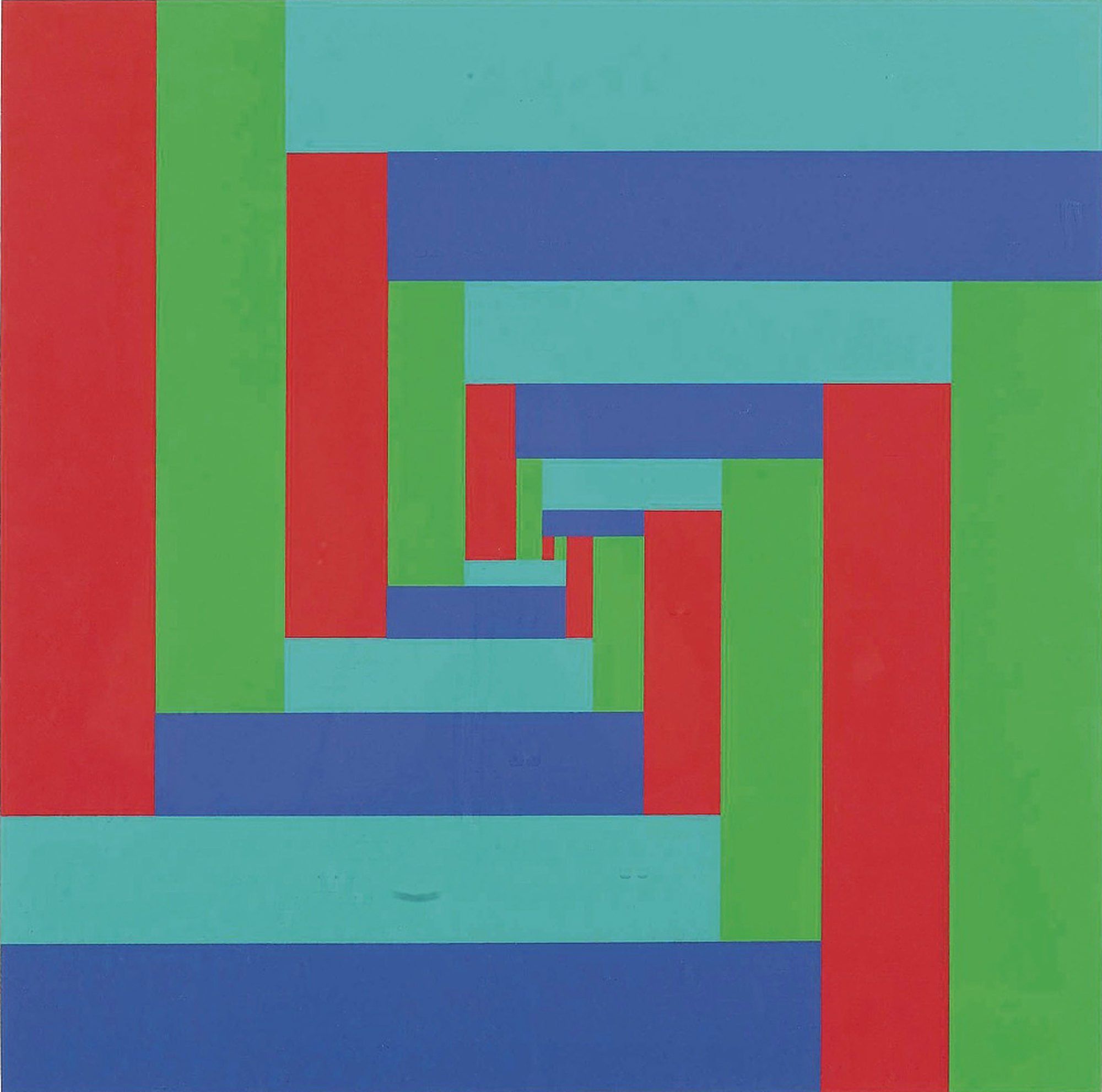Born in 1902 in Zurich, the painter, graphic artist and theoretician Richard Paul Lohse practiced a nonfigurative, geometric form of painting. His career starts in 1918 when he joins an advertising agency and trains to become a graphic designer. At the same time, working as a self-taught visual artist, he turns out an expressive style of painting that draws on Cubism.
In 1935, after a period of experimentation with still-lifes and landscape painting, his style starts to be shaped by the Constructivist model. Lohse takes up the most radical type of abstraction at this point. Lines, squares and multiples of squares become his sole formal vocabulary. Under the influence of the work of Piet Mondrian and Theo van Doesburg, he adopts horizontal and vertical directions as the only segmentations of the pictorial field and, in 1943, begins programming his compositions completely, i.e., the selected colours are applied in uniform, unmodulated blocks and correspond to numbers, just as the forms do, which are seen as measurable quantities. The painter rationalises his pictorial approach and develops modular and serial systems.
A great champion of avant-garde movements, he founds the Swiss artists association Allianz in 1937 with Léo Leuppi, plays an active role in the review Abstract + Konkret and joins the Schweizer Werkbund. Lohse is equally committed to promoting technological and social developments; his political convictions lead him to take part in the Resistance movement during the Second World War. His body of work has a profound and lasting influence in Switzerland and Europe.
Along with Max Bill, Camille Graeser and Verena Loewensberg, he represented the Zurich branch of Concrete art, theorised by van Doesburg. From 1948 on, Lohse showed his work in venues around the world, notably at Amsterdam’s Stedelijk Museum in 1961 and the Kunsthalle in Bern in 1970. Following his death in 1988, retrospectives have been regularly devoted to him and his work.
In 1935, after a period of experimentation with still-lifes and landscape painting, his style starts to be shaped by the Constructivist model. Lohse takes up the most radical type of abstraction at this point. Lines, squares and multiples of squares become his sole formal vocabulary. Under the influence of the work of Piet Mondrian and Theo van Doesburg, he adopts horizontal and vertical directions as the only segmentations of the pictorial field and, in 1943, begins programming his compositions completely, i.e., the selected colours are applied in uniform, unmodulated blocks and correspond to numbers, just as the forms do, which are seen as measurable quantities. The painter rationalises his pictorial approach and develops modular and serial systems.
A great champion of avant-garde movements, he founds the Swiss artists association Allianz in 1937 with Léo Leuppi, plays an active role in the review Abstract + Konkret and joins the Schweizer Werkbund. Lohse is equally committed to promoting technological and social developments; his political convictions lead him to take part in the Resistance movement during the Second World War. His body of work has a profound and lasting influence in Switzerland and Europe.
Along with Max Bill, Camille Graeser and Verena Loewensberg, he represented the Zurich branch of Concrete art, theorised by van Doesburg. From 1948 on, Lohse showed his work in venues around the world, notably at Amsterdam’s Stedelijk Museum in 1961 and the Kunsthalle in Bern in 1970. Following his death in 1988, retrospectives have been regularly devoted to him and his work.










